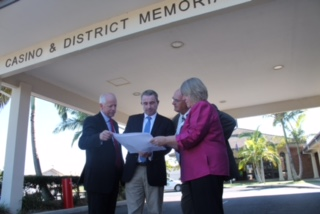As any health professional would know, it is often difficult to attract GPs to regional and rural towns.
This is why the Federal Government recently overhauled its GP Rural Incentives Programme (GPRIP), which means towns like Casino, Coraki, Evans Head, Kyogle, Iluka and Yamba will now receive increased subsidies to attract and retain doctors.
The new GPRIP system delivers a fairer system for smaller towns; redirecting money to attract more doctors to smaller towns that have genuine difficulty attracting and retaining doctors.
It made no sense that under the previous government’s system, some $50 million a year was being used to pay incentives for doctors to live in 14 large regional cities, including Townsville (population 175,000), and Cairns (population 145,000).
It makes much more sense to use the GPRIP funding to attract doctors to where the greatest shortages are - small rural and remote communities, not big regional cities.
This means bigger incentive payments will go to doctors who choose to work in the areas of greatest need.
The highest incentive paid to work in remote Australia will jump from $47,000 a year to $60,000 a year. The maximum incentive to work in a town of less than 5,000 in regional Australia will increase from $18,000 to $23,000.
Other changes include:
- Doctors will be able to take leave from a rural practice for up to five years with no loss of incentive status on their return;
- Four existing programs have been streamlined into a single GPRIP retention payment;
- Doctors will need to stay in a rural or regional area longer - two years up from the current six months - before they receive the incentive.
- Doctors in remote areas will receive incentive payments after a year.
Great news for people with melanoma with the Federal Government last month announcing it had listed the breakthrough drug Keytruda on the Pharmaceutical Benefits Scheme.
This will improve quality of life for more than 1,000 patients and make the $150,000 per year treatment affordable.
It complements $1.3 billion from the 2015/16 Budget for other melanoma medicines as well as drugs to treat breast cancer, blindness and shingles.
Treatment using pembrolizumab (Keytruda®) currently costs patients with metastatic melanoma up to $156,130 per year without taxpayer subsidy through the PBS.
Patients will now pay $6.10 if they are concessional patients or $37.70 for general patients.
Shortly after my election, I started lobbying the then health minister to find $3 million to upgrade the Emergency Department at Casino and District Memorial Hospital.
Late last month, I delivered on my commitment with the opening of the newly upgraded Emergency Department.
It now has new treatment and resuscitation bays, a new triage area and staff room, and improvements to the ambulance entry area and waiting rooms.
Casino’s new Emergency department and the $4.5 million upgrade of Ballina Hospital will have a two-fold effect – it will give each community better health facilities, while easing pressure at Lismore Base Hospital. In short, there will be long-term benefit for locals, hospital staff, visitors to the region and new residents.
I would like to thank all the staff at Casino Hospital for their ongoing professionalism throughout the construction. I think they will agree it has been worth it.
















